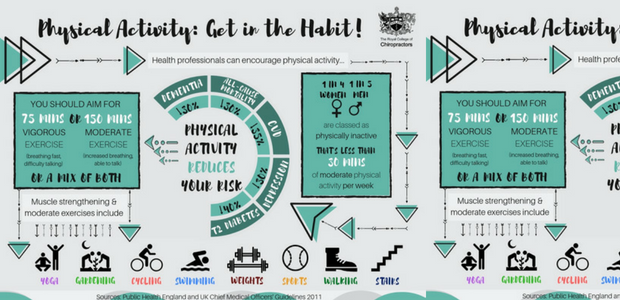Pain In The Back As A Sign Of Health: Usual Conditions And Their Symptoms Described
Pain In The Back As A Sign Of Health: Usual Conditions And Their Symptoms Described
Blog Article
Produced By-Koch Eason
If you're experiencing back pain, your body may be trying to tell you something more than simply discomfort. The way your back really feels can provide valuable ideas about your general well-being. Recognizing the certain kind of discomfort you're really feeling and any kind of accompanying signs is crucial to untangling the secret behind your discomfort. Let's explore the usual conditions and symptoms related to different kinds of back pain to shed light on what your body may be signaling.
Types of Neck And Back Pain
When it concerns back pain, there are numerous types that you might experience. One common kind is muscle pain, often caused by overuse, stress, or injury to the muscle mass and ligaments supporting the spinal column. This type of pain can range from mild pain to serious and devastating discomfort.
An additional type is nerve pain, which can result from problems like herniated discs or sciatica. Nerve pain often offers as a sharp, shooting feeling that emits down the leg.
Joint discomfort in the back can stem from problems like arthritis or sacroiliac joint dysfunction. This sort of discomfort is generally really felt in the reduced back and can be aggravated by certain movements.
Additionally, pain in the back can be related to structural issues such as spinal constriction or vertebral cracks. Comprehending https://www.chiroeco.com/chiropractic-stats-for-national-drug-free-pain-management-awareness-month-in-september/ of back pain you're experiencing is vital in determining the ideal therapy and monitoring strategies.
Common Effects to Watch For
Moving beyond the numerous types of neck and back pain, it is very important to acknowledge the usual signs and symptoms that can signify underlying problems.
find more info and back pain that worsens with motion or in the evening could indicate an extra severe problem. Numbness or prickling in the legs or feet, specifically when accompanied by weakness, might point to a nerve-related problem. If you experience abrupt weight reduction together with neck and back pain, it could be an indicator of a much more systemic condition.
Focus on any modifications in bladder or digestive tract function, as this could be connected to spine compression. High temperature, chills, or evening sweats together with pain in the back may signify an infection. Watch out for discomfort that emits down one or both legs, potentially a measure of sciatic nerve pain.
Wellness Issues Linked to Back Pain
If you suffer from pain in the back, it's critical to comprehend the possible health and wellness problems linked to this discomfort. Pain in the back can be a sign of various underlying problems, including muscle pressures, herniated discs, osteo arthritis, spinal stenosis, and even problems like kidney rocks or infections.
Muscular tissue stress are common and frequently arise from raising hefty objects or unexpected motions.
Herniated discs happen when the soft tissue in between vertebrae protrudes, creating nerve irritability.
Osteo arthritis, a degenerative joint illness, can cause back pain as cartilage wears down.
Spinal constriction, the narrowing of the spinal canal, can put pressure on nerves.
Kidney rocks might create intense neck and back pain if they move right into the urinary system tract.
Infections like back osteomyelitis can also show up as neck and back pain. Comprehending these prospective wellness problems can aid you look for suitable treatment and monitoring for your back pain.
Final thought
So, next time your back hurts, take note of the type of pain and accompanying signs and symptoms. It could be a signal from your body concerning underlying health and wellness conditions like muscle stress, nerve issues, joint troubles, or perhaps structural problems. By acknowledging these indicators, you can take proactive steps to address the root cause of your pain in the back and boost your overall health and wellness.
